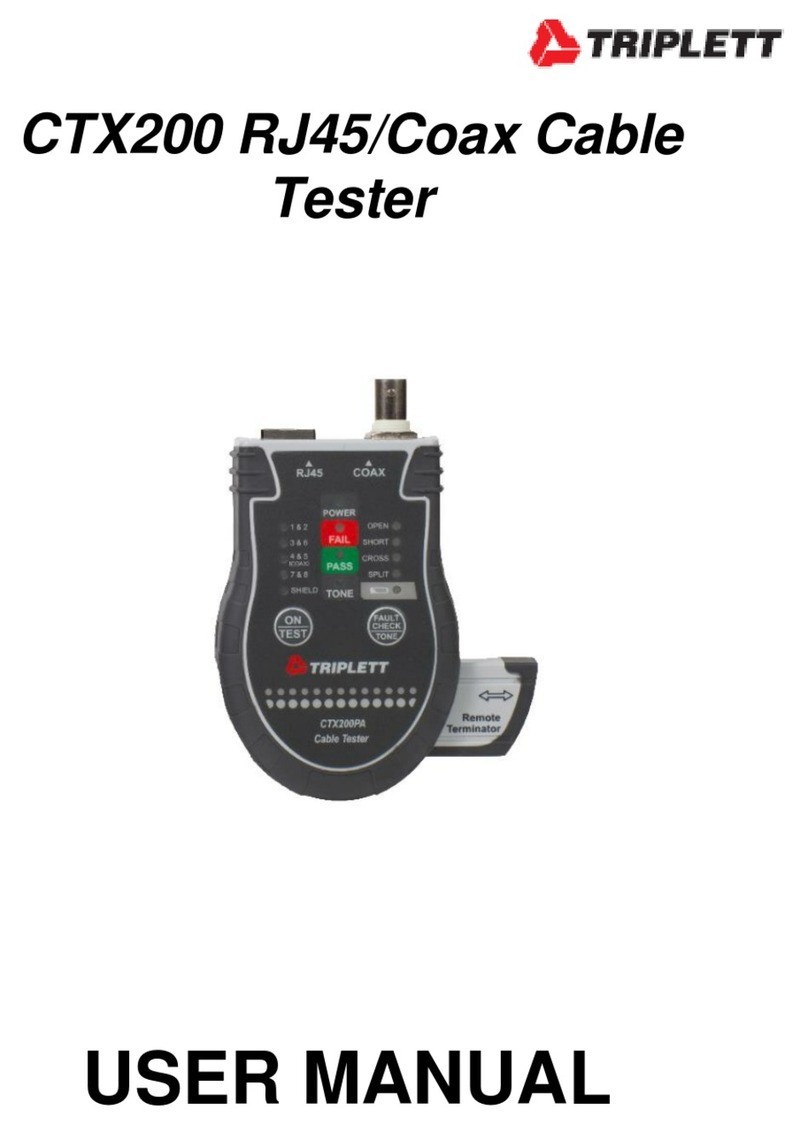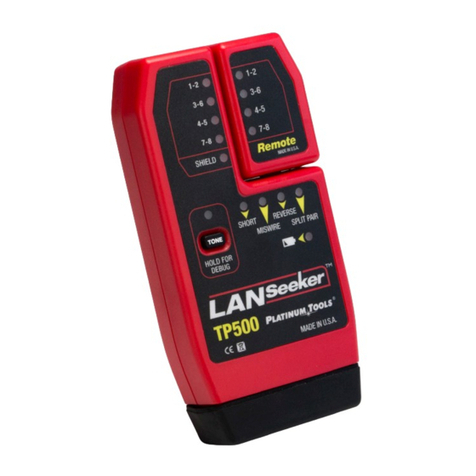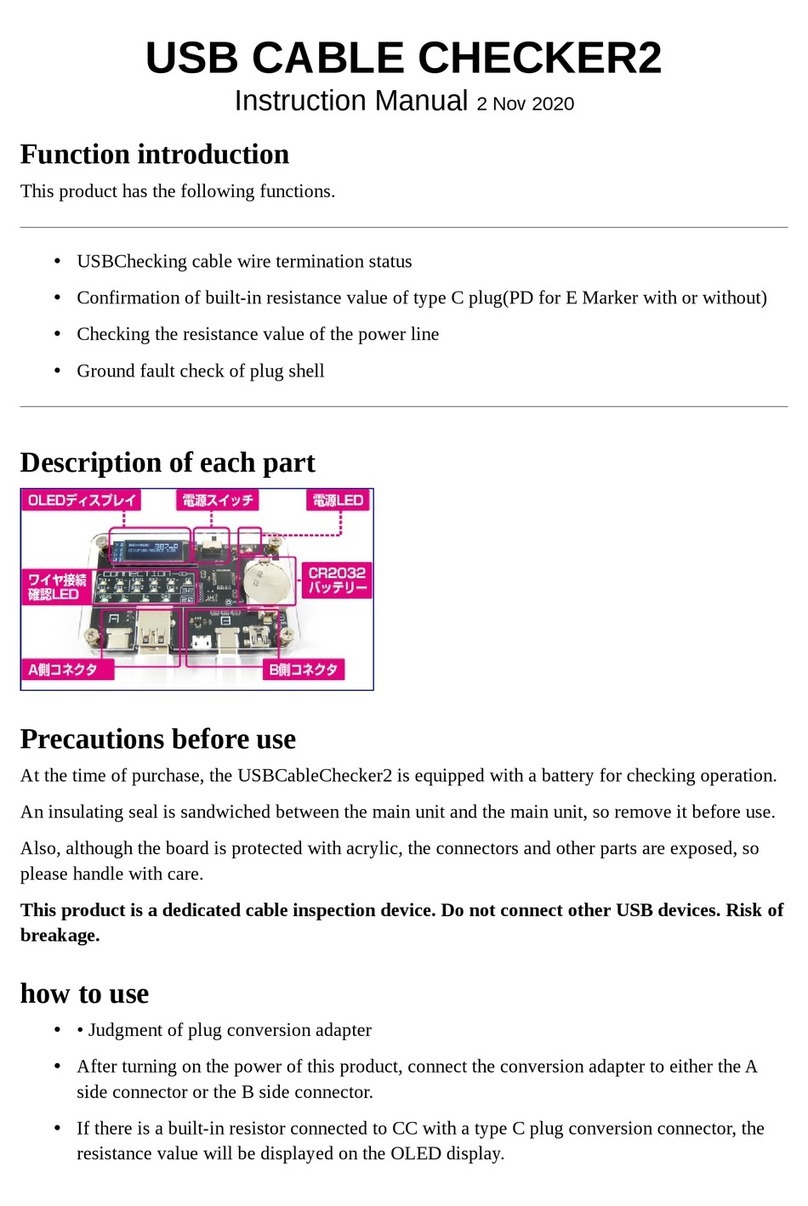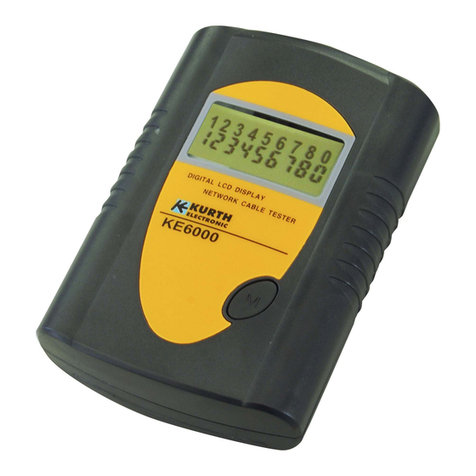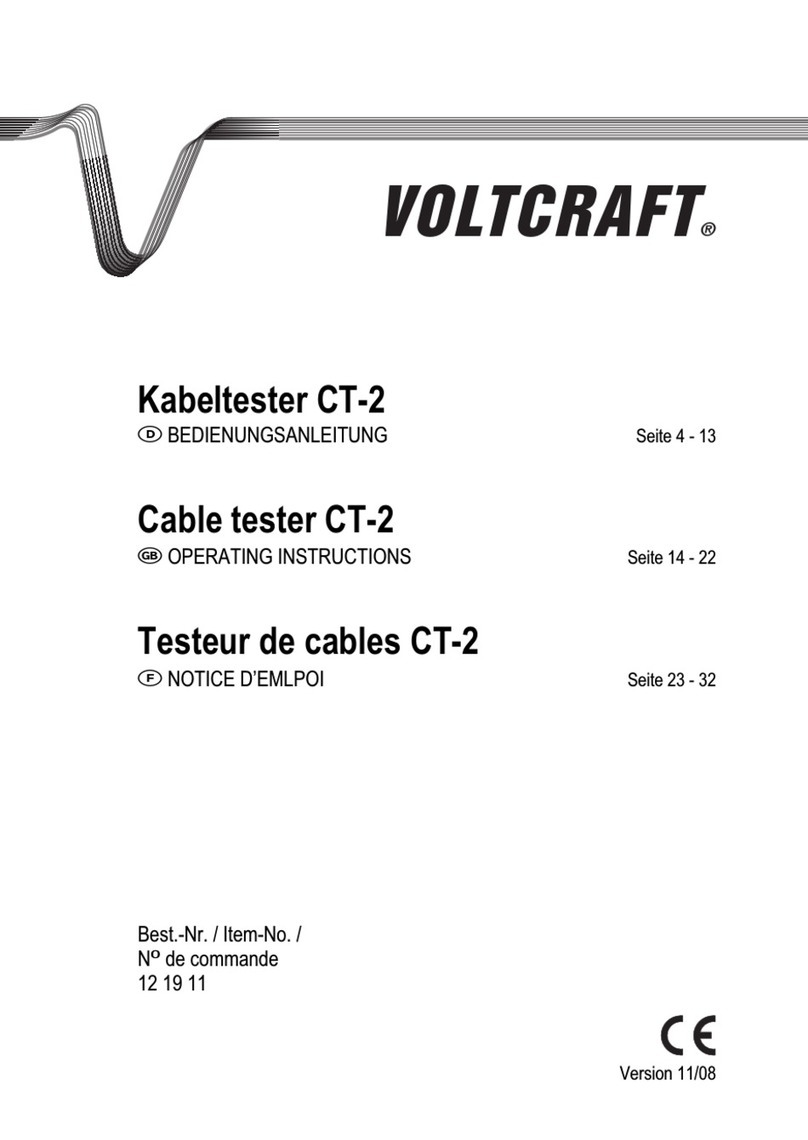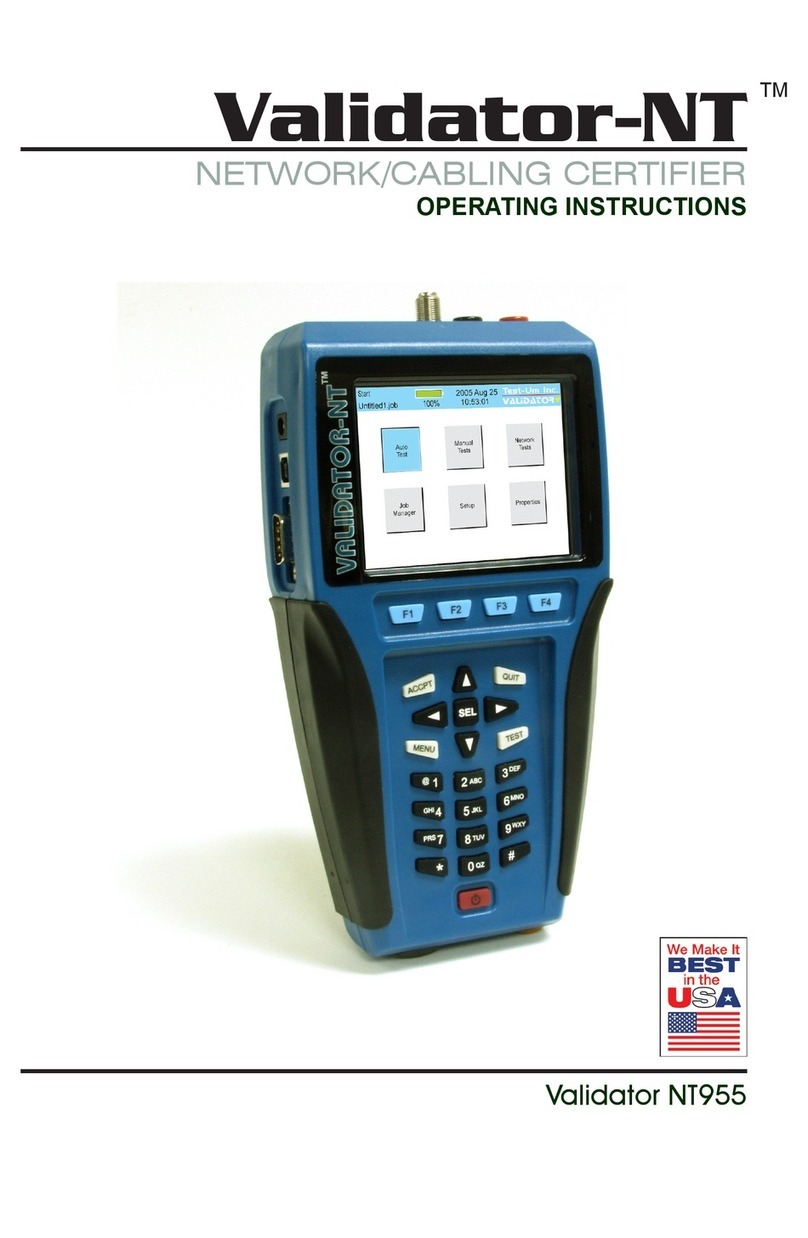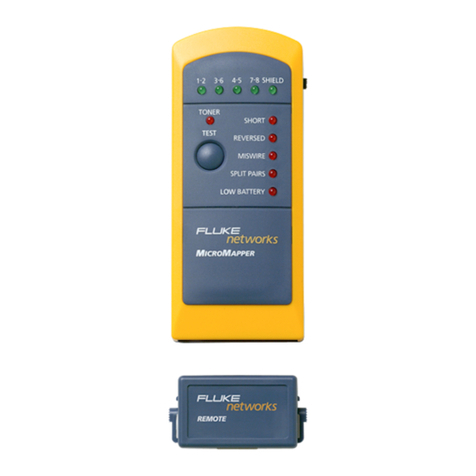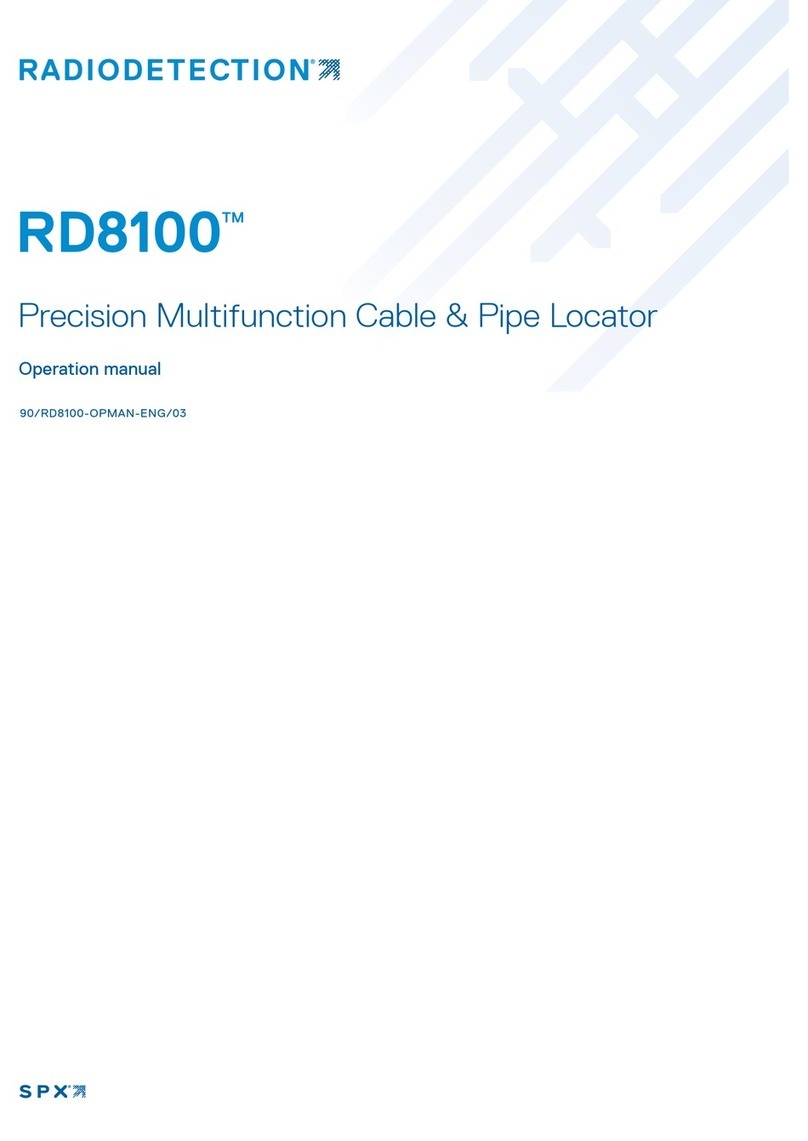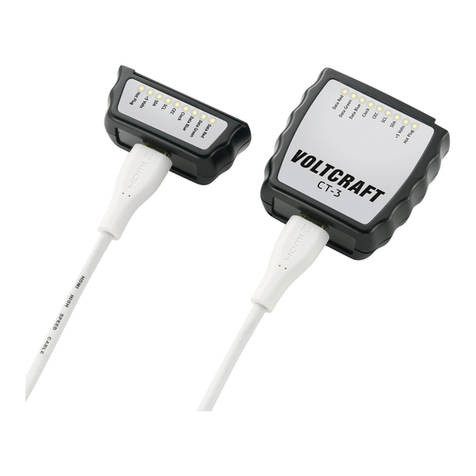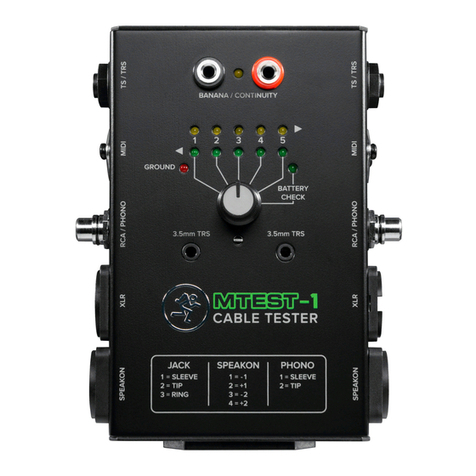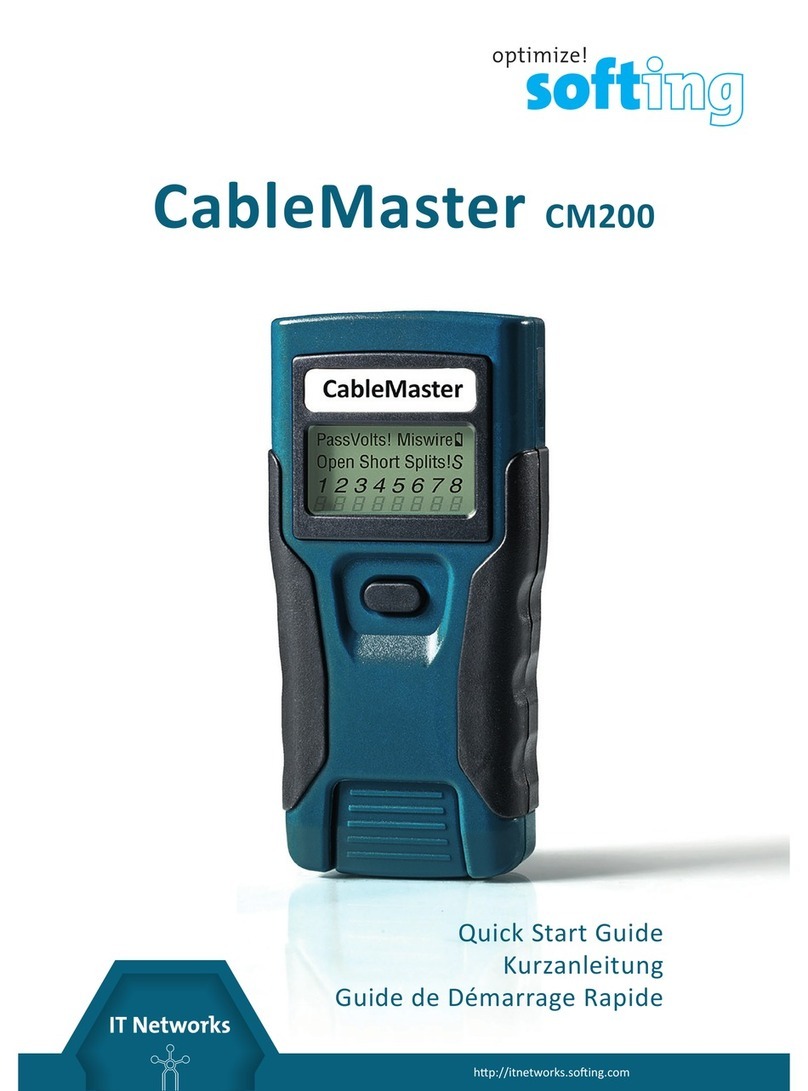
VON MODEL SST15-832 ARC REFLECTION SECTIONALIZING SYSTEM Page 3
II RECEIVING AND CHECKING OUT
The Model SST15-832 is packed to arrive in good condition. Unpack and check to see that
there is no physical damage or parts which have come loose during shipment. A reel of
cable at least 50 feet (15m) long is required to check out the unit. A roll of RG-58 works
very well for this purpose. Two or three reels of URD cable connected together can provide
longer lengths. If there are questions about the instructions which follow, see Section VI for
more information and sample radar screens. Ground the unit using the green ground cable
provided to the system neutral or building ground if inside. Connect the output lead of the
system to the test cable. The red lead goes to the center conductor and the green lead
goes to the neutral.
1. Turn the unit ON to view the cable with the radar. The unit will momentarily show a
screen that says “AutoAnalyze cable, wait one moment.” The unit will then show the
cable with the right marker at the end. If the end is not marked correctly, push the
"RANGE" button until the “brick” on the right side of the screen lines up with the word
RANGE, and increase the range with the ARROW keys until the typical up blip for the
far end of the test cable is observed. With a jumper, ground the clamps at the end of
the HV output lead and watch the display as the “up” blip changes to a “down” blip.
The left point where the two waveforms diverge is the end of the HV lead and the
beginning of the test cable. If the left marker does not already line up with this point,
consult with the factory.
2. Now connect the conductor at the far end of the reel of test cable to its neutral or
shield with a jumper. Observe the leftmost point at which the two traces diverge.
The up blip at the open end will have an identical down blip from the short. The
leftmost point where the two blips change direction is the end of the cable.
3. Make a gap at the far end of the test cable between the center conductor and the
cable shield to simulate a fault which can be impulsed (thumped). A distance of
.0625" (1.5mm) to .188" (5mm) will do fine for this gap. When additional cable is
available, it may be connected to the test cable at this point so the fault will not be
exactly at the end. Temporarily short the gap with a jumper and observe the radar
screen. Remove the short at the gap.
4. Push the START button. A second trace(reference) will appear and the words
“WAITING FOR THUMPER” will should appear at the top of the screen. The
voltage should rise to the set voltage and then discharge. When the gap fires,
the top trace should change. The fault will have a down blip just like when a
shorting lead was placed from the center conductor to the shield at the same
point. The bottom trace is the cable without the short created by the arc, and will
now be active. The left point where the two traces diverge is the fault. By
putting the right marker at this point the distance to the fault can be determined.
If the gap is too large at the simulated fault, the capacitor will not discharge and
the voltage will not fall. In that case, push the STOP button, reduce the gap, and
try again.
